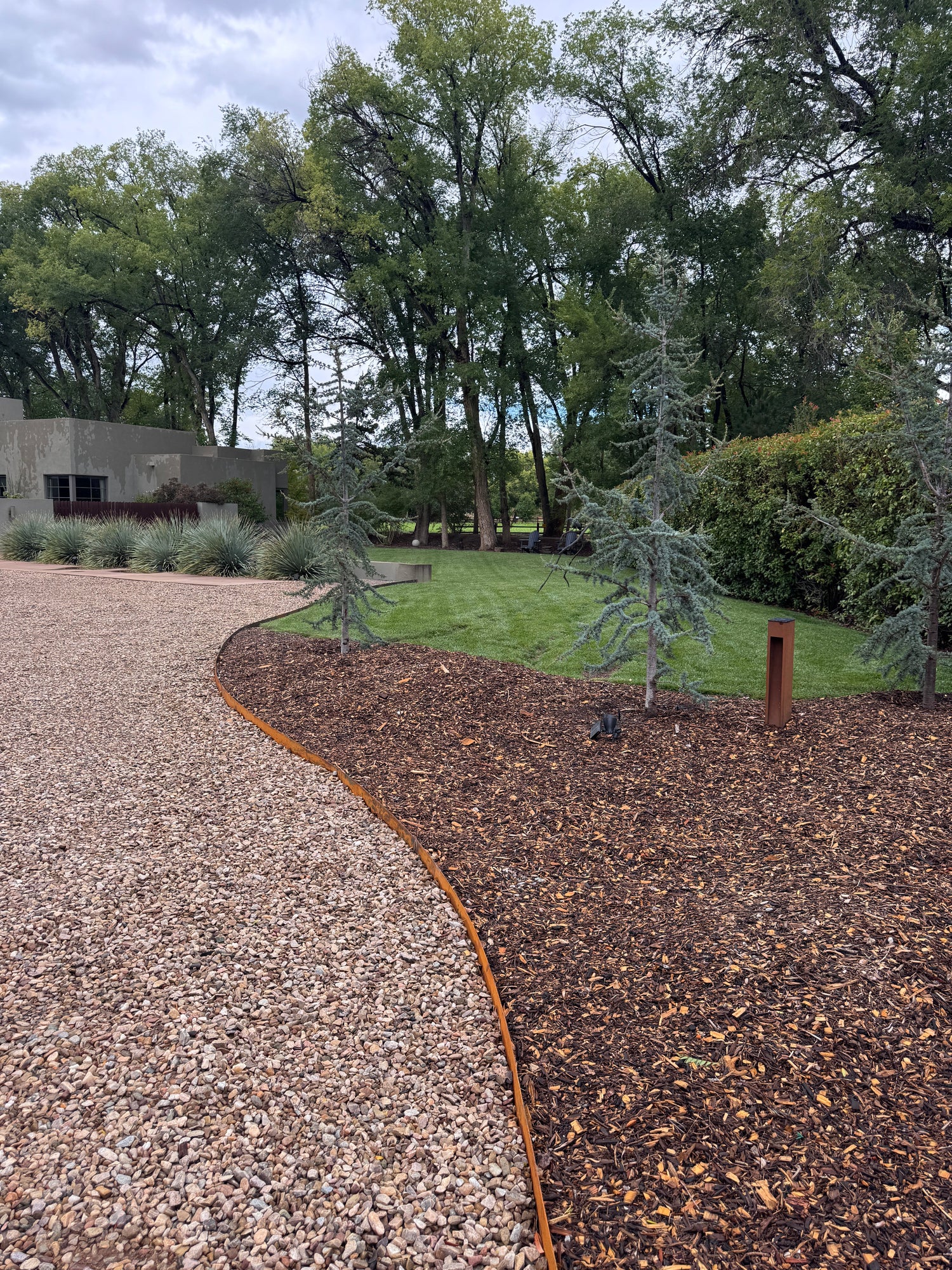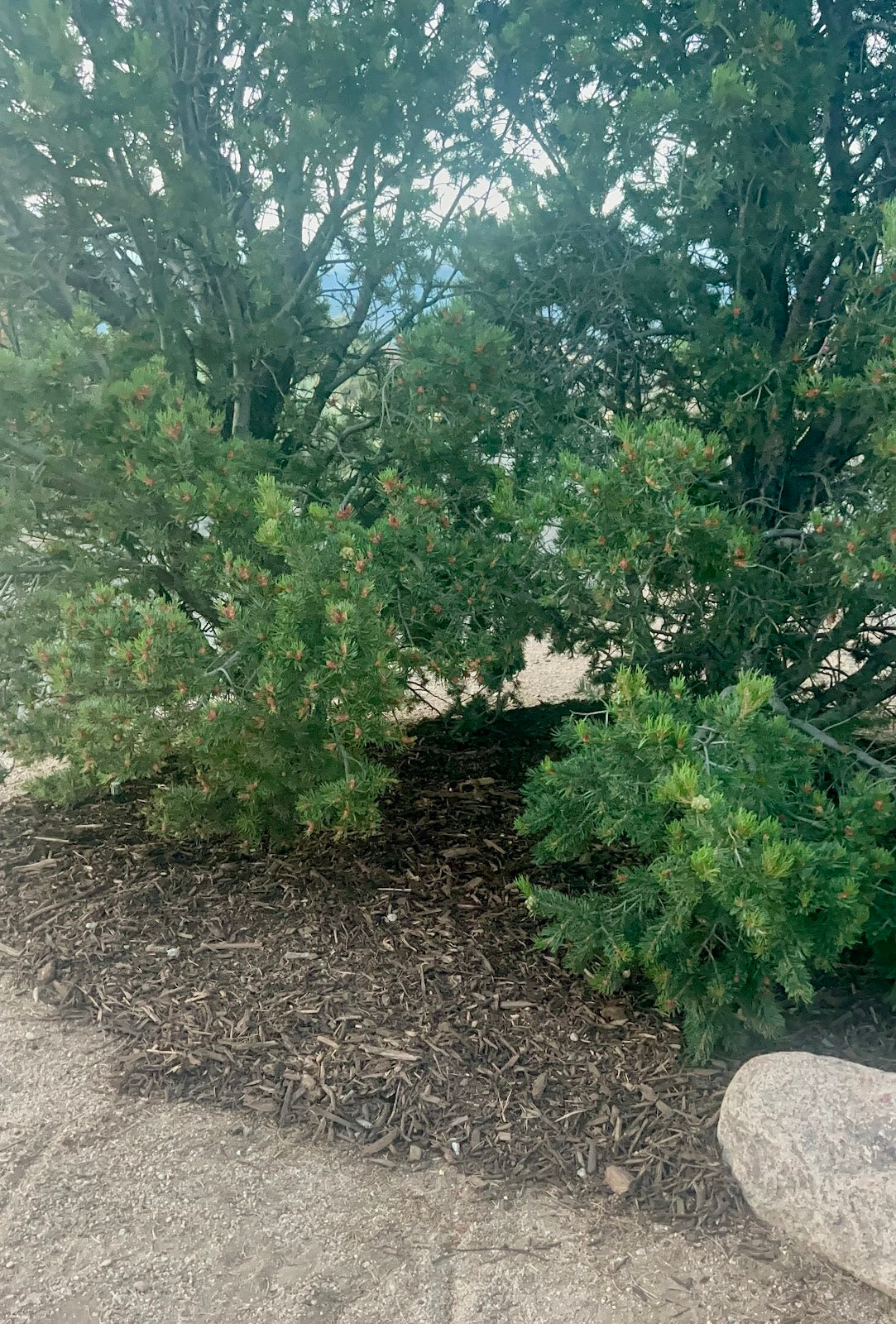By Wendy Blair, Expert Gardener, Instagram: @505garden
Every shrub is a perennial, but not every perennial is a shrub. So, what’s the difference between a shrub and a perennial? Let's break it down:
- A shrub is a woody plant (usually smaller than a tree) that typically has multiple woody stems branching from or near the ground. In our USDA hardiness zone in the greater Albuquerque area (approximately zone 7), many shrubs are deciduous, meaning they lose their leaves in the winter. The leaves, and possibly blooms, (depending on the shrub) come back in the spring. Shrubs can be treated as a somewhat permanent structure in the landscape, living on average 10-15 years or more.
- A perennial can be a woody or herbaceous plant. Herbaceous perennials are non-woody and die back to the ground in the late fall. The roots survive the winter and re-sprout from the ground in the spring. They grow back bigger every spring until they hit their mature size. Perennials live for more than two years, and some can live for 50 years or more ( i.e. peonies and roses). Most perennials, with a few exceptions, can be moved or even potted up to be stored inside over winter if they are particularly tender (not frost tolerant).
It is important to know if the plant you are buying is an herbaceous perennial. You don’t want to dig out a plant you think died in the fall only to realize it would have come back in the spring bigger and better! If in doubt, leave it till summer to see if any new growth has occurred.
Best time of year to plant shrubs and perennials
The best time to plant new shrubs and perennials is in the spring and fall. If the area you are placing your new shrub is in a protected spot, and you have a good watering system, you can also plant in the summer. Root disturbance under hotter, drier summer conditions, especially within New Mexico, creates a level of stress many plants don't perform well under. As soon as the soil has defrosted and is workable in the spring, most perennials will appreciate the fresh seasonal start with a generous helping of fresh compost and premium soil.
The other alternative is to plant in fall when the cooler weather allows new root growth to occur rather than the plant putting all of its energy into new top growth (stem, leaves, flowers and fruit). This encourages a strong root system that will in turn produce a fantastically healthy plant come spring and summer. The planting instructions are the same for both spring and fall plantings, so let's dig in!
Digging the hole
Dig wide, not deep! When preparing your planting hole it is important to dig the hole 2-3 times as wide and only as deep as the root ball of your plant. Holes dug deeper than the root ball will allow for the plant to settle in the hole and can eventually cause problems with root rot and disease, especially in native varieties.

(Notice the poor soil just below the surface. This soil should be amended with compost)
Carefully remove your plant from its plastic pot and inspect the roots. If the roots are densely bound or growing in a circular pattern, you need to break up the pattern. You can take your fingers and lightly scratch the roots to break them up. If the roots are intensely bound, you can make a few cuts to the roots with some bypass pruners.

(This is an example of healthy roots of an herbaceous perennial. No root disruption is necessary. If you see very little soil, and mostly roots, you will need to loosen the roots before planting).
To Amend the Soil
Most of the native soil in our area isn’t a great environment for many plants to thrive. Soil in Albuquerque is either poor drainage, contains rocks or sand, with little to no organic matter. If the soil at your home is dark and full of earthworms, then you’re good to go! However if your native soil is dry, powdery and light tan in color, then you should amend your soil.
Amending the soil you backfill in the planting hole is the key to success. We recommend mixing your native soil 50/50 with Soilutions Compost. Adding compost to your native soil will help clay soils with drainage and help sandy soils with water retention. It also helps produce the proper alkalinity for your shrub or perennial and to receive organic material full of beneficial microbial life near the delicate roots of your new plant. Optionally, consider adding rooting hormone powder or myccorhizal powder to help give an extra jumpstart to the roots.
Make sure to pack the amended soil in and around the rootball of your new plant and thoroughly water it in! Top dress with more compost and your choice of mulch. here's our recommendation for visually appealing Mulch that is also a tree and shrub's best friend!
Custom Soil Amendments: Species Consideration
Native Plants: There are some plants that prefer a “leaner” soil. This means they actually do better with less nutrient-rich soil. Examples of this type of plant are any type of sage, lavender, sedum, ornamental grasses, yarrow and coneflowers. With these types of plants you will want to cut down on the amount of compost you use to amend the planting hole. We suggest 1 part compost to 3 parts native soil.
Flowering Plants: If you want to increase the flowering potential of your new shrub or perennial, you can use a phosphorus-rich amendment at planting time. We recommend our Bloomin’ Boost soil amendment. This is our favorite fertilizer because it is made with organic ingredients like kelp meal, alfalfa meal, sea-bird guano, fish meal, insect frass and fish bone meal. Natural amendments have a lower risk of “burning” new plants than chemical fertilizers, so you can use this at planting time. Just throw some in the bottom of your planting hole, and some on top of your plant once its in new home! Flowering plants like lilacs, roses, peonies, wisteria and rose of Sharon are just a few flowering shrubs and perennials which require that extra phosphorus to bloom.

(Roses fertilized with Bloomin’ Boost)
Evergreen Plants: Plants like boxwood, photinia and arborvitae can benefit from a nitrogen-rich soil amendment. Like all landscape plants, evergreens require nutrients to grow well. A soil amendment high in nitrogen provided the necessary nutrition that catalyzes leave growth highly beneficial for evergreen plants. We recommend our all purpose Soil Food. You can add Soil Food to the bottom of your planting hole and top dress your newly planted shrub before mulching…which is the next step in planting your new shrub.

(Boxwoods fertilized with Soilutions Soil Food)
MULCH!
This is quite possibly the most important step to planting your new shrub or perennial. Place roughly 2-3” of mulch made of organic materials around your new plant. Start adding mulch 2' from the base of your plant (leave this area exposed), out to the furthest branches of your plant. Further out is better to allow for future growth. You can also completely mulch a flowerbed to cover all of your plants. It’s not only useful, it's beautiful!
Mulch helps keep roots cool in the summer and warmer in the winter. It also helps retain much needed water. Mulch is also a natural weed suppressant when spread thick enough. We recommend using Soilutions Forest Floor Mulch which is made from chipped and ground woody materials, plus a bit of compost to help feed your plants.

(Peonies mulched with Soilutions Forest Floor Mulch)
Watering Guidelines
The most important job once your plant is in the ground is giving it a good drink. Young shrubs and perennials need to be watered more frequently than the watering recommendations for an established plant. Establishing a new plant’s roots could take a year or more. The key to establishing roots is slow, deep irrigation. This type of watering allows the soil to completely saturate so the roots have more time to absorb the water. Drip irrigation on a timer can also help avoid excess runoff and evaporation. A great resource for watering established plants for the greater Albuquerque area can be found at www.505outside.com.
While the above steps are essential to the success of a newly planted shrub or perennial, active monitoring of your plants is just as important. Look for signs of distress and make any adjustments immediately. This will likely guarantee a plant that is happy and healthy!




